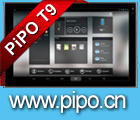On June 26th 2010 I published this video which unveiled the Indian $35 Tablet project’s Bill Of Material for the first time:
India’s Minister of HRD, Shri Kapil Sibal, or one of his colleagues, watched my video.
On July 22nd 2010, the Government of India’s Ministry of Human Resources Development announces the $35 Tablet, announces they plan to have a Chinese manufacturer deliver a few million of these in India for education.
I would like to be serious a bit, as there are literally billions of children on this planet who are waiting for tools for a better education, they are growing old with a missed opportunity to learn. I don’t have anything against Governments watching my video-blog to find out what are the best ARM Powered devices on the market, but I would like to suggest a few more things they can do if they would like the project to be successful all the way:
1. Don’t work against OLPC, announce you want to join their efforts. Doesn’t mean you use OLPC’s Marvell 610 platform, just means you share all knowledge and collaborate towards a same goal. You are supportive of each others goals, this is not a competition, this should be a collaboration.
2. Turning a tablet into a successful educational tool is not a piece of cake. It’s probably not enough to just take whatever cheapest materials and deliver it like that.
3. Denounce Intel’s blatant corruption attempt, 4 days after the announcement of the $35 ARM Powered Android Tablet project, Intel India is quick to suggest the Government should rather (basically give up on the ARM Powered Tablet) and just use the “Donation of 1500 Intel powered tablets” for pilot project (to last a couple years or so preferably, enough time to delay all other real mass low cost deployment attempts), same thing Intel did all over the world to block OLPC from reaching developing countries. Intel has subsidiaries all over the world, they may not be instructed centrally by Paul Otellini for all it does all over the world, but they seize any opportunity at preventing other potentially disruptive technologies from catching on. I mean seriously, what could Intel seriously want to do helping a project to make a $35 ARM Powered tablet for education running Android? Intel can afford to buy India a couple million of these ARM Powered tablets to help get things started, but is that anything near what they had as intention?
4. If you are a Governmental Non-profit project, you setup a Website, open source the code, informations about potential suppliers (real-time information about manufacturing requirements). Tell me in the comments if India’s HRD has been open about this project, I haven’t seen it. If they chose to make their project secret, it would have a harder time to get implemented. Be open about the full Bill of Material. If you listen to my video, you can hear the AllGo Systems representative list these Bill of Materials:
ARM9 Processor: $5 (Freescale i.MX233)
Memory: $3
WiFi B/G: $4
Other discrete components: $3
Battery: $5
7″ 800×480 resistive touch screen: $15
Total bill of material: $35
If this is it, then clearly publicly say this is it. Let people know what alternatives there may be, let the community discuss what alternatives could be used.
For example, I am pretty sure an educational tablet cannot be made without a 7″ Pixel Qi screen. For one it’s the only way to hope it has low enough power consumption to last long enough for children in India who don’t have a lot of power, perhaps no power at all (let it be powered by Bicycles, hand crank, sub-$5 A4 sized solar panels..). A reflective screen is the only way the tablet can be used for reading ebooks, the only way it can be used outdoors during the day in places where a child might not even have a roof on the school or no school at all.
5. The Bill of Material should be calculated openly with the prospect of using that budget that you have for it. Meaning if you can produce 1 million units, that obviously affects the price of each Pixel Qi 7″ screens, perhaps making it as cheap as a normal LCD screen.
6. Be open with how you plan to finance the project. This whole deal with the Chinese manufacturer not wanting to pay HRD $13 Million just sounds weird. Why should the manufacturer pay India and not the other way? Usually, as far as I know, a manufacturer would be paid on shipping of completed product, and India’s engineers can work at the factory to monitor yield, quality and batches before mass production is started and while they are being mass manufactured.
7. Be open about how it is designed. The reports (2) on this tablet being a copy of some Chinese design may be true for the casing, but that does not mean that the cheap Freescale i.MX233 ARM9 based SoC on Motherboard, electronics, Android software porting to that specific ARM9 processor (perhaps one of the cheapest ARM SoC in the world), all that does not mean AllGo Systems didn’t actually do this original work. I believe they have. The fact is the Chinese market, Chinese manufacturers have so-called Open and Free designs for those cases that can be used for cheap ARM Powered Tablets, cheap ARM Powered laptops, cheap ARM Powered e-readers. But that does NOT mean that what is inside is always a “clone” of some other design. OEM’s might have turn key solutions, all ready made designs that they produce and deliver low cost, but they also produce the designs of foreign companies.
Related articles
- India’s $35 Tablet Loses Primary Contractor, Could Face Delays (slashgear.com)
- The $35 Indian Tablet Delayed, Possibly Up For A Vaporware Award (crunchgear.com)
- The $35 Tablet: Toast? (technologizer.com)
- India’s $35 Android tablet apparently vaporous after all (teleread.com)












